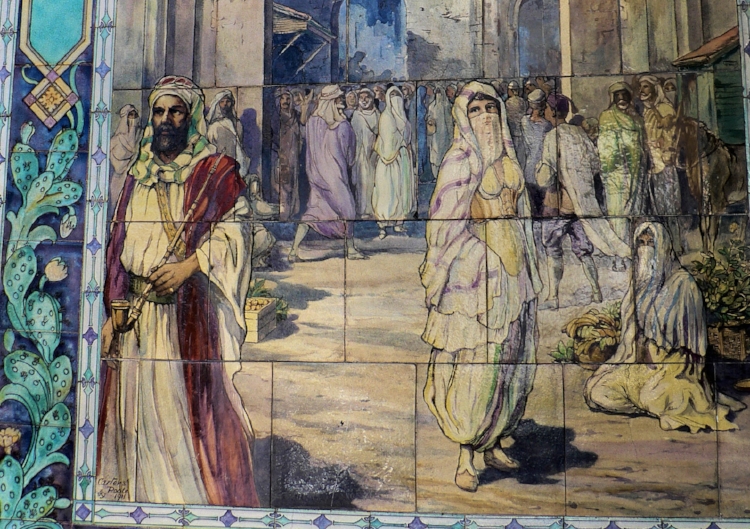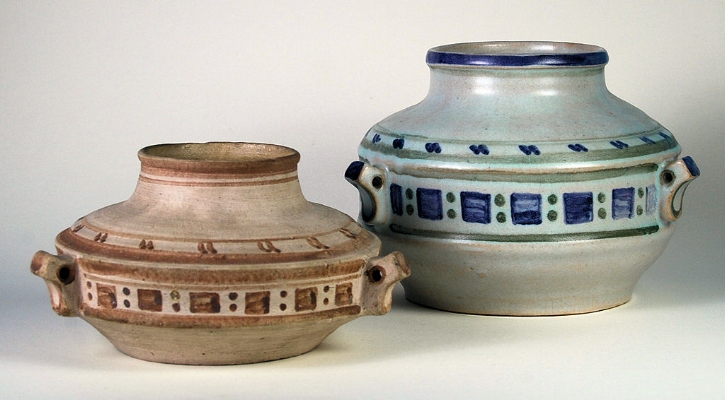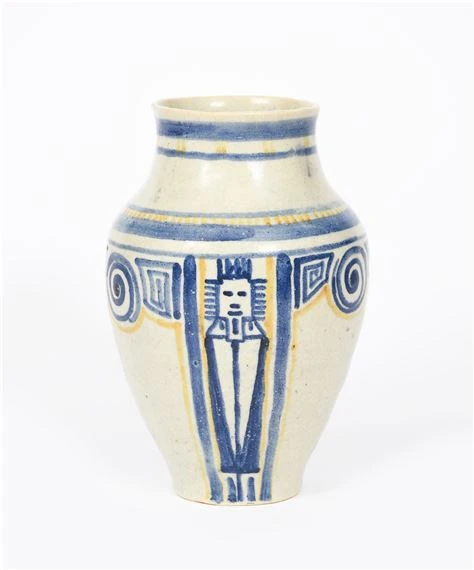James Radley Young, trained as a painter and modeller at Sheffield School of Art and went to work in Poole in 1893 for Carters Pottery, (later Carter Stabler and Adams, and then Poole Pottery), following his half brother Edwin Page Turner, who was head of design at that time. At this time one of of Young’s main jobs was having to scale large mural designs that Carters were known for making. With Young’s skills as an artist and learning about glazes in the pottery, many of the designs Carters made became more elaborate and could adorne buildings without the damage painted works receive.

Having left Carters in 1901 Young set up his own pottery called Hammer Pottery in Haslemere, Surrey. There he designed a series of garden pots for Liberty’s, known as the Celtic range. Other designs in the series were by Alfred Knox. However the pottery failed in 1911 and he returned to work for Carters.

The recession during the War enabled him to develop his interests in Spanish and Portuguese pottery, leading a team of the otherwise unemployed women modellers. The designs were very much in the spirit of the Arts and Crafts Movement, whereby individual pieces were handmade, following centuries of tradition, and were intended to be useful as well as decorative.
These works made during the First World War by Young, looked very much like the style of the Bloomsbury Group at the same time, due to the simple nature of the brushwork. The Bloomsbury Omega studios opened in 1913 and they must have been influenced by Young as much as he would have been by them. They also both shared an interest in Egyptology.

The style developed from simple unglazed ware into glazed pieces decorated with sprigs or bold stripes. The sprig design was to become a theme echoed in Poole pottery for the next half century.

The designs of the decoration where not the only impact that Young had on Carters, as having run his own pottery, Young took to having a more, handmade look to the pieces and they were thrown on a pottery wheel.
